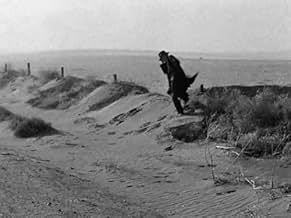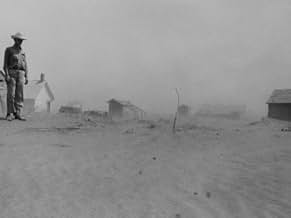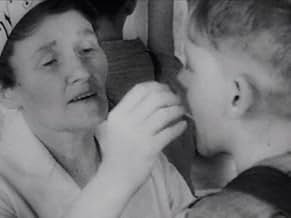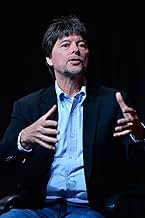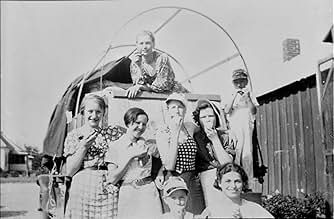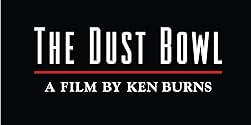IMDb रेटिंग
8.2/10
2.3 हज़ार
आपकी रेटिंग
अपनी भाषा में प्लॉट जोड़ेंA documentary about the 1930s drought of North American prairie farm land, and its consequences during the great depression.A documentary about the 1930s drought of North American prairie farm land, and its consequences during the great depression.A documentary about the 1930s drought of North American prairie farm land, and its consequences during the great depression.
- 2 प्राइमटाइम एमी के लिए नामांकित
- 2 जीत और कुल 5 नामांकन
एपिसोड ब्राउज़ करें
फ़ीचर्ड समीक्षाएं
As an immigrant I was not familiar with this episode in American history besides a few facts connected to Great Depression and migration of thousands to California so well described by John Steinbeck. This movie however showed me that it may not be only about economic woes of that era but other factors played significant role such as greed, cheating of poor farmers by unscrupulous developers in a sort of Alaskan scheme,disregard for needs of a land (notice that historians point to the fact of that area used incorrectly for wheat instead just for grazing), over extensive farming resulting in erosion and general lack of paying attention to climate. All this unfortunately reminds me of our times which makes this movie especially troubling. What saved us completely from total gloom after watching are people: beautiful farmers undefeated in the face of such calamity. I just wish that those types of Americans would be shown more often to the rest of the world and maybe they will be more liked by others. Instead what the world see are shallow celebrities, rich and arrogant businessmen. Show the world more that woman in the beaten truck with her hungry children in that famous photograph made on the way to California and she should be real American lady not Modonna or similar types. Now, on another note: what struck me about the movie is how well our heroes looked despite poverty, lack of food, dust and proper medical care. I even cracked a joke to my family that they all looked as they had just left Gap store. Compare them with contemporary society and see difference. Obesity, bulky faces, sloppy clothes, lack of grace, a hint of stupidity on our faces coming from constant looking at commercial surroundings and see how those old farmers looked dignified compared to us. They ate less but purer food, were surrounded by nature and beauty (with the exception of those 10 years of dust bowl), had deep connection to others, walked constantly... - perhaps these things made them prettier. So if there are messages coming from this movie there are following: treat nature with respect, plan for the future, save water; and in other realm: dress better, walk more and with poise and clean your house. If they could do it despite all the odds, so can we.
10kironkid
I've only viewed part 1 (last night) and I'm anxiously awaiting part 2, which is tonight. So far, it has been very good and informative. A significant piece of American history. One we should all be knowledgeable on. We had a large part in creating this natural catastrophe, and we are doomed to do similar things if we continue to do as we are presently doing. It reminds me of the recent flooding in New York, New Jersey and Japan. Much of that damage and loss can be contributed to poor planning on mankind. Nature is cyclical. We just choose to ignore the past history.
Very good and informative. I highly recommend it.
Russ
Very good and informative. I highly recommend it.
Russ
Amazing information...and the interviews you assembled were fantastic. I had heard of this but was completely ignorant as to just how significant it was.
The stories told by the interviewees were both extremely sad and inspiring. I can't believe that families never left. The one fact that still sticks out is that during one dust storm, an extremely bad one, dirt from the Midwest ended up out on the deck of a ship in the Atlantic and in the White House amazing
And thank God you interviewed those people when you did. We need to be taking advantage of our elders and their experiences the way this documentary did.
The stories told by the interviewees were both extremely sad and inspiring. I can't believe that families never left. The one fact that still sticks out is that during one dust storm, an extremely bad one, dirt from the Midwest ended up out on the deck of a ship in the Atlantic and in the White House amazing
And thank God you interviewed those people when you did. We need to be taking advantage of our elders and their experiences the way this documentary did.
Ken Burns really doesn't know how to make a bad documentary, but all of his documentaries have acquired the very familiar style that now borders on the repetitive, and thus borderline boring. "The Dust Bowl" reflects this problem. As is always the case with Burns' documentaries, the images are striking, the interviews moving and insightful, and the narrative - usually - is quite gripping. There's a lot to be learned about the Dust Bowl of the 1930s from this film, and it's generally worth the time. The problem with this film is that no documentary should feel like it takes longer to watch than the event itself. Coming in at nearly 4 hours, this is a bit more narrative about the dust bowl than this particular viewer wants to absorb. After so many great works, Burns' editors seem to have shied away from trimming his films to a length and pace more suitable to the topic. The middle portion of this documentary in film in particular drags on incessantly with tales of one dust storm after another until one is compelled to exclaim "enough - I get it! For Ken Burns fans and those really interested in the dust bowl, this is a worthy watch. For those with a more passing interest, I suggest the PBS documentary from the "American Experience" series.
All Americans have heard of the Dust Bowl and know it was a phenomenon associated with drought in the 1930s, and that Okies left for California, a la The Grapes of Wrath. We have also heard about the more recent droughts in the West. So the thought arises, could it happen again? But that's about it. Most non-Americans don't even know that.
With some of his documentaries on more distant subjects, Ken Burns relied on old photographs and narratives read by actors. But The Dust Bowl is the story told by the people who saw the massive dust storms, day after day, with their own eyes, breathing the dust, eating the dust, getting lost in the dust. They are often the very people in the pictures used. At at the end, we see a dedication listing the participants who had died before the documentary was released. Burns was just in time to save this bit of oral history.
What struck me initially was how objective, unemotional, and even dry was his approach, far less spirited than subjects like the Statue of Liberty, Baseball or Jazz. And the pace is leisurely, a lot of time spent looking at a lot of towering dust clouds and hearing account after account of being engulfed by dust and sand. Most film makers would have sped things up for the MTV generation, perhaps added booming sound effects and gimmicky zips and flashes to keep our attention. But this is Ken Burns, and he has the street cred to do things his way. And it was the right way. People actually lived through these dust and sand storms for years, so surely we can endure the accounts for a few hours to get a feel for it.
But this tells a larger story, of how the region was settled, telling another side of the Oklahoma land rush that I had never heard, and how government policies and World War I led to foolish overproduction of wheat on land better suited to grazing. Yes, foolish. The people involved say so, themselves, for the most part. This is not Ken Burns political propagandist, as some reviewers allege.
What struck me is how objective this account is, how balanced, presenting various sides, and grounded in fact, like good journalism. The film covers the New Deal policies of FDR to try to save the land and help those living in the Dust Bowl; it also provides insight into the origins of farm price support policies. Is this what causes some viewers to froth at the mouth? I kept waiting for the judgment, the observation that global warming could cause more dust bowls, in America, and around the world. But it never came. Perhaps he could anticipate the response. Frankly, he didn't need to spell out the connection.
With better, scientific farming practices, the Dust Bowl land could be saved, more or less. You still need rainfall, unless you are willing to drain aquifers. But the story of the Dust Bowl also offers some promise that there may be intelligent ways to adjust to the effects of climate change on agriculture. Discussion of this is the part that I wish was included.
This is a vitally important story that needs to be remembered, with lessons for our and future generations. It is also a story of the human spirit, of people who endured hardship far longer than any of us should, or probably could, bear. I am glad they got a chance to share their story with us.
-- Footnote:
A good supplementary program is The Civilian Conservation Corps episode of The American Experience, #22.1, for a larger context on the environmental and economic situation.
With some of his documentaries on more distant subjects, Ken Burns relied on old photographs and narratives read by actors. But The Dust Bowl is the story told by the people who saw the massive dust storms, day after day, with their own eyes, breathing the dust, eating the dust, getting lost in the dust. They are often the very people in the pictures used. At at the end, we see a dedication listing the participants who had died before the documentary was released. Burns was just in time to save this bit of oral history.
What struck me initially was how objective, unemotional, and even dry was his approach, far less spirited than subjects like the Statue of Liberty, Baseball or Jazz. And the pace is leisurely, a lot of time spent looking at a lot of towering dust clouds and hearing account after account of being engulfed by dust and sand. Most film makers would have sped things up for the MTV generation, perhaps added booming sound effects and gimmicky zips and flashes to keep our attention. But this is Ken Burns, and he has the street cred to do things his way. And it was the right way. People actually lived through these dust and sand storms for years, so surely we can endure the accounts for a few hours to get a feel for it.
But this tells a larger story, of how the region was settled, telling another side of the Oklahoma land rush that I had never heard, and how government policies and World War I led to foolish overproduction of wheat on land better suited to grazing. Yes, foolish. The people involved say so, themselves, for the most part. This is not Ken Burns political propagandist, as some reviewers allege.
What struck me is how objective this account is, how balanced, presenting various sides, and grounded in fact, like good journalism. The film covers the New Deal policies of FDR to try to save the land and help those living in the Dust Bowl; it also provides insight into the origins of farm price support policies. Is this what causes some viewers to froth at the mouth? I kept waiting for the judgment, the observation that global warming could cause more dust bowls, in America, and around the world. But it never came. Perhaps he could anticipate the response. Frankly, he didn't need to spell out the connection.
With better, scientific farming practices, the Dust Bowl land could be saved, more or less. You still need rainfall, unless you are willing to drain aquifers. But the story of the Dust Bowl also offers some promise that there may be intelligent ways to adjust to the effects of climate change on agriculture. Discussion of this is the part that I wish was included.
This is a vitally important story that needs to be remembered, with lessons for our and future generations. It is also a story of the human spirit, of people who endured hardship far longer than any of us should, or probably could, bear. I am glad they got a chance to share their story with us.
-- Footnote:
A good supplementary program is The Civilian Conservation Corps episode of The American Experience, #22.1, for a larger context on the environmental and economic situation.
क्या आपको पता है
- ट्रिवियाExtracts from the interviews in this documentary were used by Christopher Nolan in Interstellar (2014) when depicting the dust storms on Earth.
- कनेक्शनFeatured in Interstellar (2014)
- साउंडट्रैकThe Plainsman
Written by John Owen Lardinois
Performed by Fiddlin' Johnny
From Cowboy Legacy
© 1997 Makoché Music
टॉप पसंद
रेटिंग देने के लिए साइन-इन करें और वैयक्तिकृत सुझावों के लिए वॉचलिस्ट करें
- How many seasons does The Dust Bowl have?Alexa द्वारा संचालित
विवरण
- रिलीज़ की तारीख़
- कंट्री ऑफ़ ओरिजिन
- आधिकारिक साइट
- भाषा
- इस रूप में भी जाना जाता है
- Dust Bowl - Die Jahrhundertdürre
- उत्पादन कंपनियां
- IMDbPro पर और कंपनी क्रेडिट देखें
- चलने की अवधि46 मिनट
- रंग
इस पेज में योगदान दें
किसी बदलाव का सुझाव दें या अनुपलब्ध कॉन्टेंट जोड़ें


